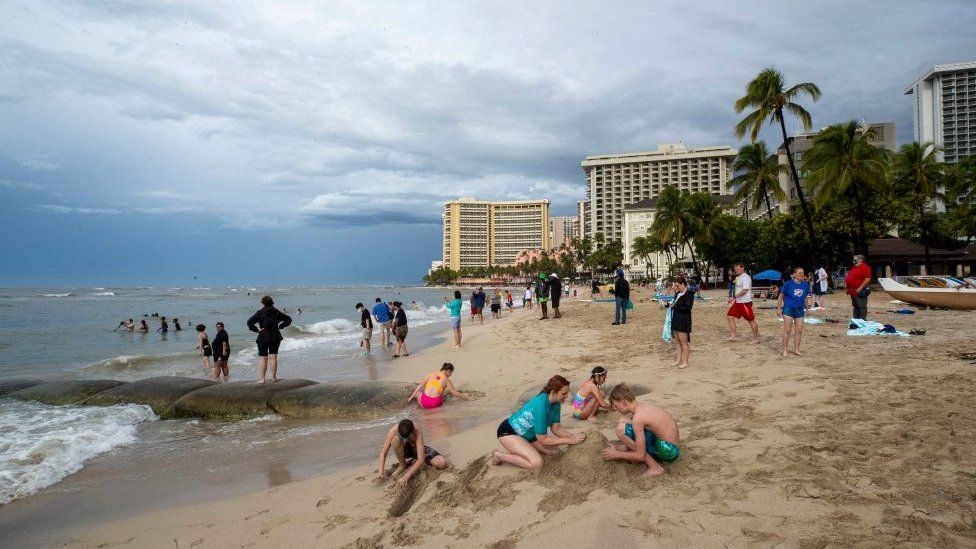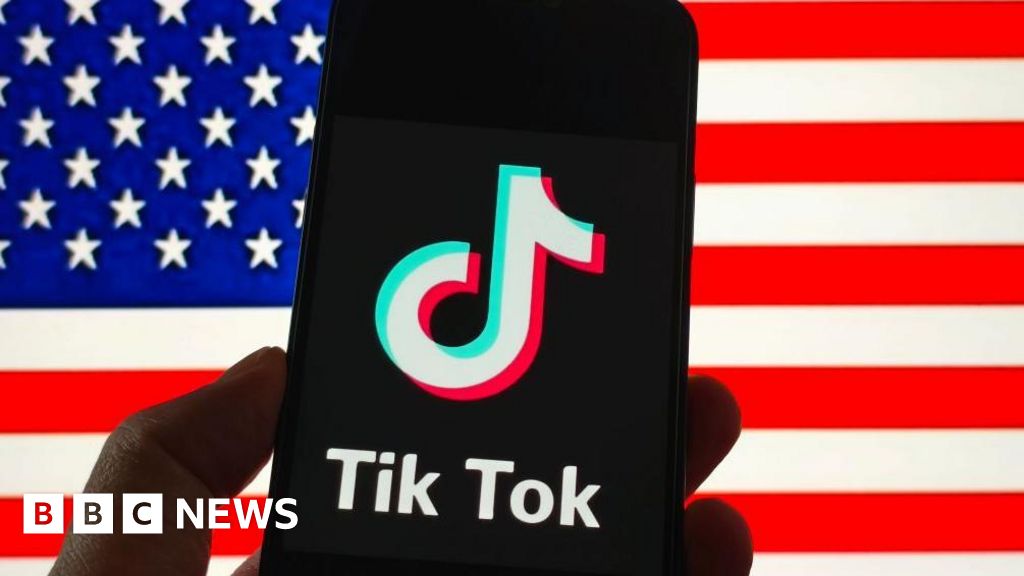ARTICLE AD BOX
 Image source, Getty Images
Image source, Getty Images
Hawaii is a popular tourist destination in the summer, with nearly a million people visiting the island in July 2022
More than a million people in Hawaii are under a state of emergency due to an approaching tropical storm.
Tropical Storm Calvin is nearing Hawaii's Big Island with a wind speed of 45 mph (75 km/h), the National Weather Service (NWS) said
As of Wednesday morning, the storm was about 250 miles (402 kilometres) southwest of Honolulu.
Officials have warned of possible flash flooding and mudslides.
The storm is expected to pass south of Hawaii County by Wednesday evening, bringing with it dangerous surf and damaging winds, the NWS said. Up to 10 inches of rain is forecast to fall through Thursday.
Hawaii's governor Josh Green has declared a state of emergency in anticipation, and has closed all state offices and schools on the Big Island on Wednesday.
"Please be safe and prepare for the arrival of this storm," Mr Green wrote in a post on social media.
Hawaii is a popular tourist destination in the month of July. The state's department of tourism reported that nearly one million visitors came to the Hawaiian Islands in July 2022.
The Hawaii Tourism Authority has issued its own warnings about the storm, asking visitors to avoid unnecessary driving, especially on the east sides of Big Island and Maui.
Tourists are also advised not to go hiking, as the wind and rain could impact trails, and have been warned that the storm could impact conditions anywhere in the state.
"If in doubt, don't go out," the Hawaii Tourism Authority said in a statement.
According to the Weather Network, hurricanes and tropical storms do not often travel in Hawaii's path, making them quite rare.
Part of the reason is geography, as the US state is quite small - about 6,400 square miles of total land area - compared to the vast Pacific Ocean where it lies.
But Hawaii has been the site of hurricanes and tropical storms in the past, and the likelihood of one hitting the island is higher during the hotter El Niño years, as warm water temperatures make it more likely for a storm to form.
The weather pattern El Niño occurs every three to seven years, with 2023 being an El Niño year.
The impact of climate change on the frequency of storms is still unclear, but we know that increased sea surface temperatures warm the air above and make more energy available to drive hurricanes, cyclones and typhoons. As a result, they are likely to be more intense with more extreme rainfall.

 1 year ago
38
1 year ago
38








 English (US) ·
English (US) ·